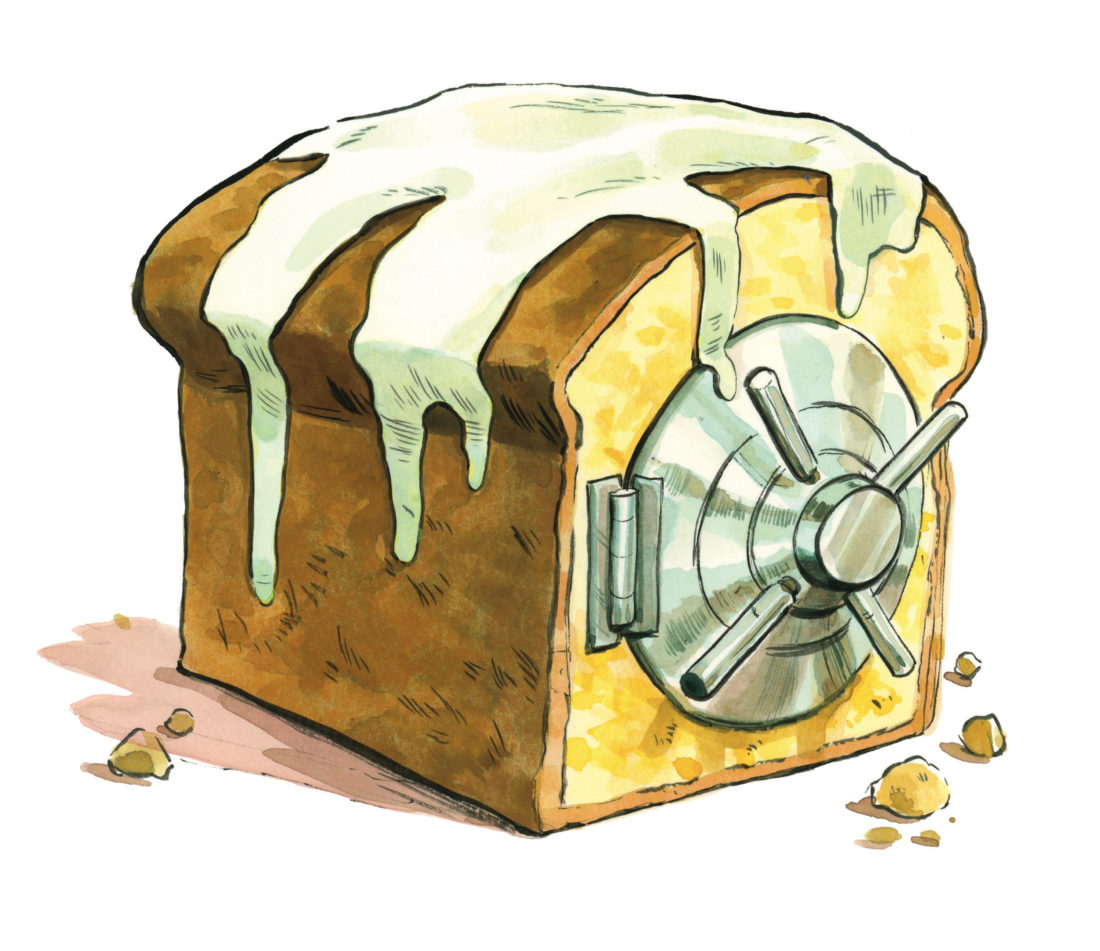Everyone claims to have the top pound cake recipe. Which is really the best?
Security needs grow when you commit a sacrilege against the Southern food canon as I’m about to do now, so while this food issue is out, I’m looking for some rangy boys to help me stand picket around the farm. Do you have any idea how much sugar is in a pound cake? At its birth in eighteenth-century England, the recipe called for a pound each of butter, eggs, flour, and sugar—beat ’em, bake ’em, bang. In France, the cake’s now-holy quartet of ingredients became the gâteau des quatre quarts—literally, the cake of four quarters. We’ll forgive you for thinking the pound cake was “Southern.” Here’s the heresy spelled out: Cut your great-great-great-grandmother’s sugar proportion by 25 to 50 percent. She’s dead, okay? If she’s as feisty as mine, she may float down the entry hall wagging a whisk at you as you’re trudging up to bed, but other than your PTSD from those bracing visits, she won’t bother you much daytimes. No matter: Your cake will be brighter and will carry what it says forthrightly, without the saccharine masquerade. As with any drug intervention, you may want to break your eaters off their jag easy, with a 15 percent reduction, building on that as you bake along. Toss in some lemon zest to confuse them; replace some of the butter with sour cream for a tart play. It’s no longer 1848. The “best” pound cake starts with recognizing that your battle for the Southern palate is with the South’s thousands of sugar addicts.
Okra! Food of the gods, or bucket of slime? Please settle this once and for all.
Okra is the bastard child of the Southern table, I’ll grant you. When met with low heat, its mucilage marches to the fore, and this “mouthfeel” has put off many a child. Thus the generations of deranged anti-okra actors emerge among the heartiest Southern trenchermen, and thus the war rages on. Disclosure: I’m a food-of-the-gods acolyte, due to the fearless cooks who raised me and who freely wielded the stuff, roasting, pickling, stewing, you name it. High heat will blunt okra’s mucilage, but low heat in soups and stews—e.g., gumbo—employs the delicious slime to great effect. Classically defined as the edible seed-bearing pod of its plant, okra is a fruit. Out in the wider world, regions vie to claim its robust grassiness—India, Japan, Southeast Asia, and not least Africa, whence it arrived via the slave ships to the Americas. First recorded in the Americas in the mid- to late seventeenth century in Brazil and what was then Surinam, the fruit had by 1809 been carried north to no less a Southern kitchen garden than that of Monticello. In the modern South, okra’s slimy power works excellently as a sociopolitical culinary metric to determine truly Southern Southerners versus those pretenders who should perhaps consider a move to one of those short-growing-season, okra-free regions.
Who invented the meat-and-three?
Nobody, and everybody. Today, Birmingham has the Irondale Cafe; Tallahassee has Earley’s; in Macon, it’s H&H Soul Food—the list of open meat-and-threes is endless, because this is the way Southerners eat. The long growing season has been reflected on the South’s home tables since America’s sixteenth-century colonization. How that bounty traditionally came to the table—unfettered by refrigeration—led in the agrarian South to the embryonic meat-and-three. By 1932, just an estimated 10 percent of all rural U.S. households had electricity. There was no “lunch.” Dinner made for the main meal of the day, on the table at noon sharp, and the first commandment of preservation was that whatever was in the field was what you had before you. Consider that repast more like a meat-and-twenty: tomatoes, butter beans, creamed corn, turnip greens, collards, black-eyed peas, string beans, crowder peas, all backed up with biscuits, cornbread, corn pone, and hush puppies, and on from there. What you weren’t busy eating, you got busy putting up. As the South urbanized under the twin engines of the Industrial Age and the World Wars, fewer and fewer people worked on home farms, but nobody stopped eating this way. The meat-and-three evolved from a commercial need, with that essence of homespun hospitality folded in: It’s not two sides. It’s three, because you may be a damn long way from the rows and hoes now, brother, but this is the South, and the crops are in.








